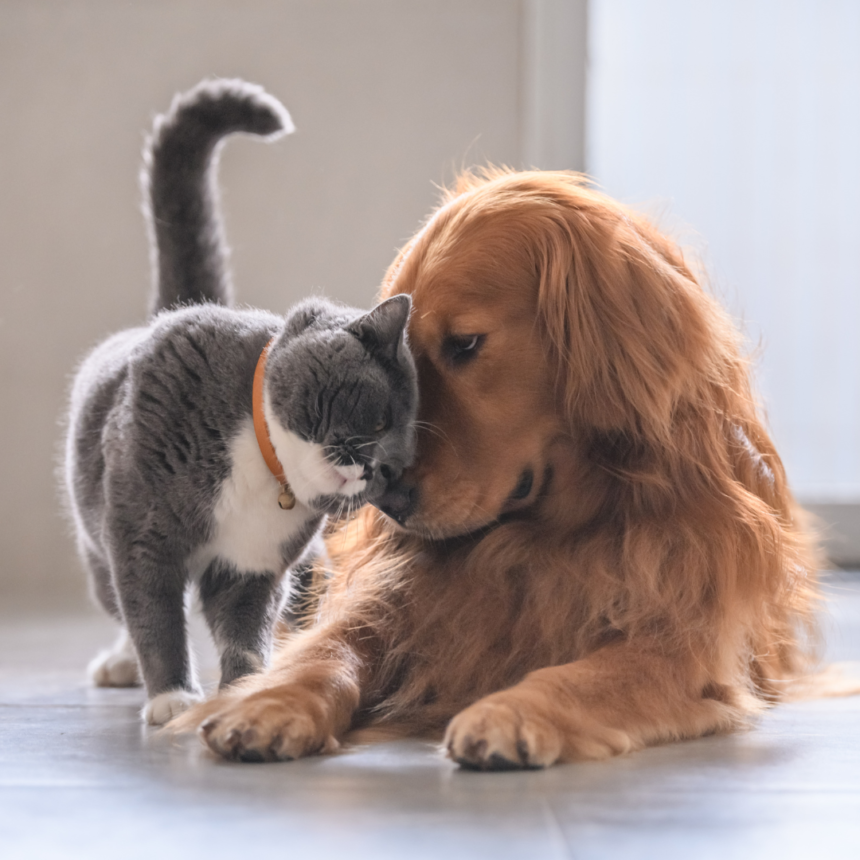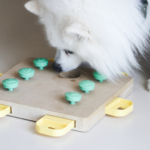Introduction
Bringing a new pet into your home is an exciting endeavor, but introducing dogs and cats requires careful consideration. This article aims to guide pet owners through the process, providing insights and practical solutions for a harmonious coexistence between their canine and feline friends.
Understanding the Nature of Dogs and Cats
Dogs and cats, despite being beloved companions, exhibit distinct behaviors rooted in their evolutionary history. Recognizing and appreciating these inherent differences is crucial for successfully introducing them. Let’s delve into the unique traits of both species, understanding the foundation of their behavior, communication, and social structures.
Behavioral Differences: Dogs, descendants of pack animals, often display a pack mentality. They thrive on social hierarchy, loyalty, and a sense of belonging. In contrast, cats are more solitary creatures. Their ancestors were hunters, and this independence reflects in their behavior. Cats tend to be territorial and may be cautious about sharing space.
Communication Variances: Dogs are known for their expressive and social nature. They use body language, vocalizations, and tail wagging to convey emotions and intentions. Cats, on the other hand, communicate more subtly. Their communication includes body postures, vocalizations like purring or hissing, and intricate facial expressions. Understanding these cues is crucial for interpreting their feelings.
Social Structures: Dogs thrive in a structured social environment, often seeking guidance and forming close bonds with their human families. Cats, while forming attachments, value their independence. They may not always seek social validation and might need personal space.
Initial Separation
Bringing a new cat or dog into a household with existing pets requires careful planning to ensure a smooth and stress-free introduction. One key strategy to pave the way for a harmonious relationship is the initial separation of the new and existing pets. This approach allows for gradual introductions, minimizing stress and enabling the animals to acclimate to each other’s scents and presence.
Animals, both dogs and cats, can be territorial and may feel uneasy when faced with a new member in their domain. To alleviate potential tension, gradual introductions are essential. This involves keeping the new pet in a separate space, allowing them to become familiar with the sights, sounds, and smells of their new home without immediately confronting the resident pet.
New environments can be overwhelming for pets. By initially separating the new addition, you reduce the stress associated with immediate interactions. Cats, in particular, are sensitive to changes in their surroundings, and a gradual introduction helps them feel more secure.
Creating Safe Spaces
When introducing dogs and cats to each other, it’s essential to create a harmonious environment that considers the unique needs and preferences of each pet. One crucial aspect of this integration is providing safe retreats for both dogs and cats, ensuring they have designated spaces where they can feel secure and comfortable.
Understanding Unique Needs: Dogs and cats have distinct behaviors and preferences when it comes to personal space. Cats, known for their love of vertical spaces, often feel more secure when they can perch on elevated surfaces. On the other hand, dogs may seek out cozy corners or areas where they can comfortably lie down and rest. Recognizing and accommodating these differences is crucial for a successful introduction.
Creating Vertical Spaces for Cats: Cats naturally enjoy being in elevated positions, as it allows them to observe their surroundings and feel more in control. Providing vertical spaces, such as cat trees, shelves, or window perches, gives felines a sense of security. These spaces also serve as retreats where they can escape from potential stressors and retreat to a higher vantage point.
Cozy Corners for Dogs: Dogs, being den animals, appreciate having their own secure and comfortable spaces. This could be a designated bed, crate, or corner where they can retreat when they need a break. Ensuring that this space is respected by all family members is crucial. Teach children and other pets to recognize and respect these areas as “off-limits” when the dog seeks solace.
Respecting Personal Retreats: Respecting the personal retreats of both pets is fundamental to their well-being. Make it clear to all family members that these spaces are essential for the pets’ mental and emotional health. Avoid disturbing them when they retreat to these areas, creating a sanctuary where they can relax and recharge.
Scent Exchange and Positive Associations
Scent exchange is a powerful strategy that allows pets to become familiar with each other’s unique odors, paving the way for a more harmonious relationship. Here, we explore effective ways to implement scent exchange and foster a sense of mutual acceptance between your feline and canine companions.
Swapping Bedding and Items: Begin by swapping bedding or items that carry the scent of each pet. Exchange their blankets, toys, or even a favorite sleeping spot. This process helps both animals become accustomed to the smell of the other, making their eventual face-to-face encounters less intimidating.
Using a Scent-Soaked Cloth: Another effective technique involves using a cloth to transfer scents between the pets. Gently rub a cloth on one pet and then allow the other pet to sniff it. This helps them associate the scent with a positive experience and reduces the novelty when they finally meet in person.
Positive Associations with Treats and Play: Create positive associations by offering treats and engaging in play during scent exchange. When pets experience enjoyable activities in the presence of the other’s scent, they begin to associate those scents with happiness and rewards. This sets the stage for a more positive introduction and interactions in the future.
Supervised Meetings
Successfully integrating dogs and cats requires a gradual approach, especially when it comes to supervised meetings. These crucial encounters set the stage for a harmonious relationship between your feline and canine companions. Here’s a guide on how to navigate these initial interactions with patience and attentiveness.
Controlled Environment: Initiate the introductions in a controlled environment where both pets feel secure. Start with short, supervised meetings, ensuring that neither pet feels overwhelmed. Choose a neutral space that doesn’t belong exclusively to either animal, minimizing territorial concerns.
Reading Body Language: Become fluent in understanding the body language of both cats and dogs. Watch for signs of stress, fear, or discomfort, such as flattened ears, raised fur, hissing, growling, or excessive panting. A dog wagging its tail doesn’t always indicate happiness, and a cat’s purring might signal nervousness. Being attuned to these cues helps you gauge their comfort levels.
Patience is Key: Emphasize the importance of patience during this phase. Allow the pets to set the pace of the introduction. If either animal displays signs of stress, consider slowing down the process. It’s crucial not to force interactions, as this can lead to negative associations.
Positive Reinforcement: Reinforce positive behaviors with treats and praise. Reward moments of calm and friendly interaction, encouraging the pets to associate each other’s presence with positive experiences. This positive reinforcement helps build trust and can expedite the bonding process.
Separation and Gradual Exposure: If initial meetings prove challenging, consider separating the pets and reintroducing them slowly. Use baby gates or closed doors to maintain a visual barrier while allowing scent exchange. Gradual exposure helps them acclimate to each other’s presence without direct contact.
Addressing Challenges
Understanding challenges and implementing effective solutions is crucial for a successful integration that fosters a harmonious relationship between your feline and canine companions.
Predatory Instincts in Dogs: Dogs, by nature, may exhibit predatory instincts, which can pose a challenge when introducing them to a new feline friend. Common behaviors like chasing, barking, or intense focus may trigger fear in cats. To address this, engage in positive reinforcement training. Reward calm behavior around the cat, and use redirection techniques, such as providing toys or treats, to divert their attention from the feline.
Fearfulness in Cats: Cats, being naturally territorial and sometimes wary of new situations, may respond to the introduction with fearfulness. This can manifest as hiding, hissing, or defensive postures. Create safe spaces for your cat to retreat to, ensuring they have vertical spaces like cat trees or shelves. Gradual exposure, combined with positive reinforcement through treats or play, helps build their confidence and association of positive experiences with the dog’s presence.
Positive Reinforcement and Redirection: Emphasize the power of positive reinforcement for both dogs and cats. Reward desired behaviors, and use treats, praise, or play to create positive associations during interactions. When challenges arise, employ redirection techniques. For instance, if a dog exhibits prey drive, redirect their focus onto a toy or engage them in a game. This not only addresses potential issues but also reinforces positive behaviors.
Conclusion
Successfully integrating dogs and cats requires time, patience, and a strategic approach. By understanding their unique needs, creating safe spaces, and fostering positive associations, pet owners can build a strong foundation for a lasting friendship between their furry companions.









